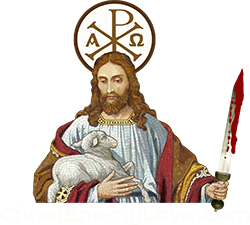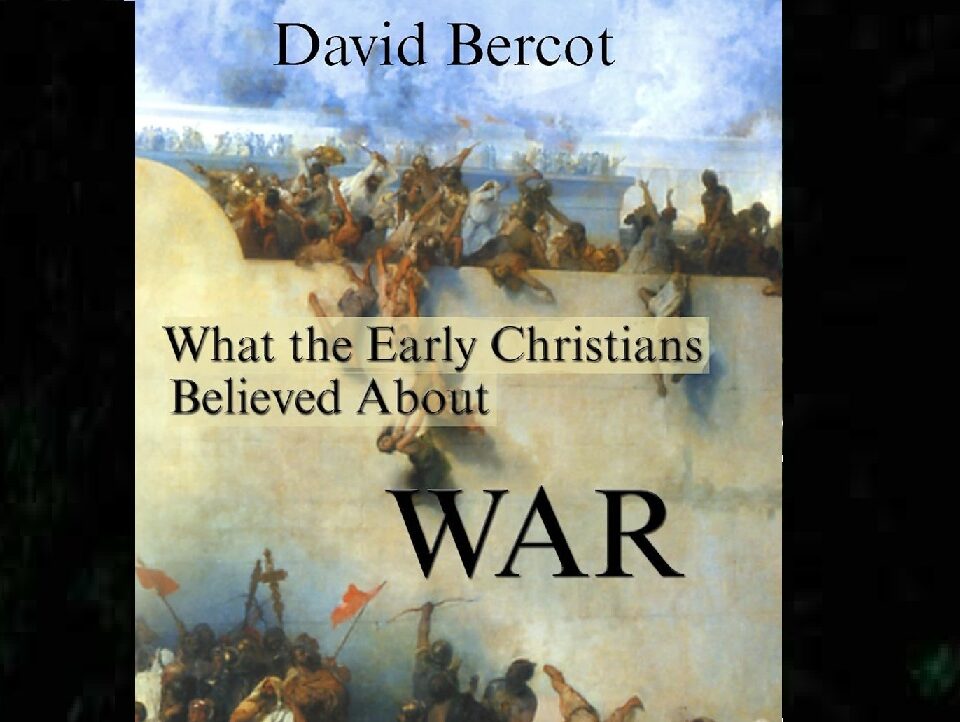Josephine Massyngberde Ford, pp 116, 121.
Jesus’ teaching on this occasion has the maximum significance – namely, that the members of violent resistance movements are to be numbered with transgressors. For him, these are the real transgressors, not tax collectors, ‘others,’ harlots, women disciples, and the handicapped. This is a sobering thought. It is a readjustment of values.
The purpose of this pericope is the conversion of violent revolutionaries. According to the Lukan theological pattern – word and deed – this word of Jesus will be complemented by his conduct in the garden, his healing of the severed ear, his forgiveness of the criminal on the cross…
Thus the two swords passage is central to Luke’s theology of the passion and to the understanding of Jesus’ teaching on non-violence and non-resistance. Jesus’ teaching is dramatically implemented in the garden where the disciples finally learn that the eschatological war will not commence. There is no need for swords on the part of Jesus’ friends or foes. Jesus’ teaching at the last supper forms a climax to all his teachings that accompanied meals during his earthly life. It means that sword bearers are classified with transgressors. Jesus will implement his own teaching about non-resistance in the next scene, in the garden.
The two swords passage prepares the reader for the trial of Jesus according to Luke.
Of most importance is the fact that Luke, and Luke alone, reports that Jesus healed the ear of the servant of the high priest. This is significant because an insult to a servant was an affront to his or her master (see 2 Sam. 10:4ff; Mark 12:1ff). In Luke it is the chief priests and their assistants who condemn Jesus. Thus this healing is a dramatic implementation of Jesus’ precept to love one’s enemies and to do good to those who hate one (Luke 6:27-28, 32-36). It is the climax of Jesus’ non-violent deportment in the garden. Indeed, both Jesus’ words and actions show an active endeavor to avoid violent resistance and show love of the enemy…
As in the other Synoptics, Jesus rebukes the crowd for coming to capture him as if he were a revolutionary or armed bandit (lestes, the word that Josephus uses so frequently for political rebels). [W.R. Wilson, The Execution of Jesus, p. 111] adds that in Luke the saying is recorded without any reference to Scripture.
“This very apt and pointed remark by Jesus at the crucial moment of his arrest would probably have been well remembered by his disciples. It was, in fact, probably the last words they heard from his lips before he was raised onto the cross…There can be little doubt that Jesus objected to his seizure as a teacher of violence and rebellion.”
Luke ends this pericope with Jesus’ words: “This is your hour and the power of darkness” (v. 53). These words are peculiar to Luke and imply that armed resistance belongs to the realm of supernatural evil (cf. Satan entering Judas at the beginning of the passion, Luke 22:3)…
Jesus, in word and action, is seen not only as non-violent, but as a healer of his enemy…The narrative ends with words that strongly suggest that violent hostility is supernaturally inspired.
These points seem to decrease any emphasis on armed conflict and lessen the risk that readers might mistake Jesus for a revolutionary. The account would also imply that bearing arms is demonic.




